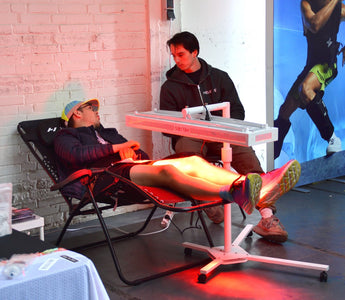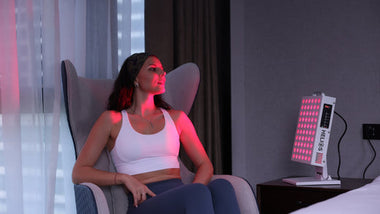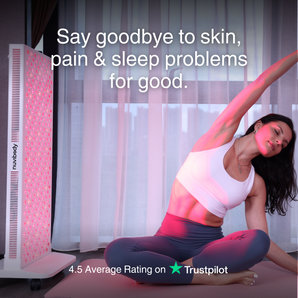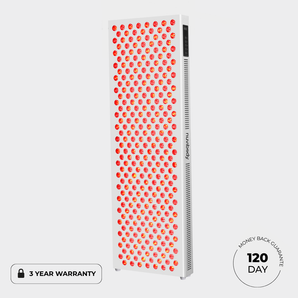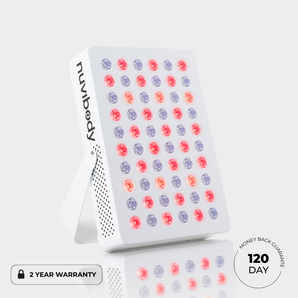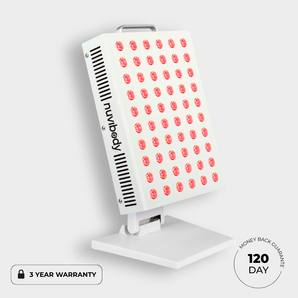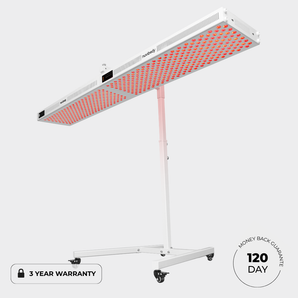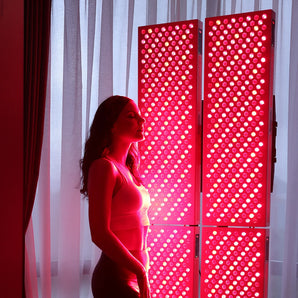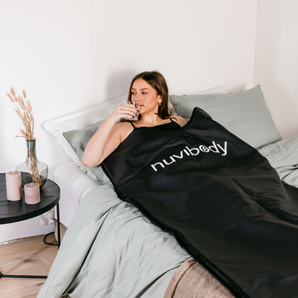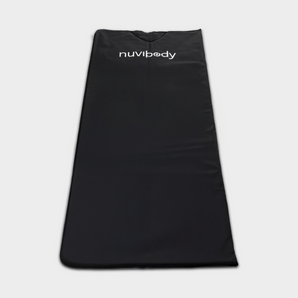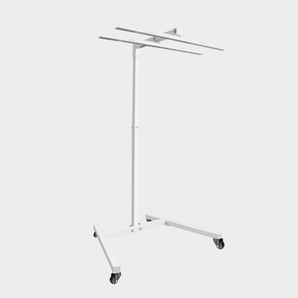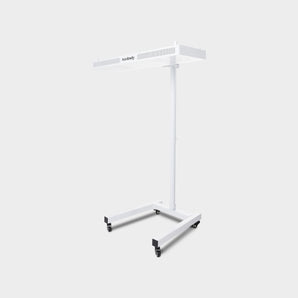In the world of elite sports, every detail is maximized: nutrition, sleep, supplements, and increasingly, light . Red light therapy (RLT), or photobiomodulation , has quietly made its way into the recovery routines of elite athletes worldwide in recent years. Not as a wellness hype, but as a serious, scientifically proven tool that accelerates muscle recovery, improves performance, and helps prevent injuries.
Famous athletes who swear by red lights
Olympic swimming champion Michael Phelps, NFL player Patrick Mahomes, NBA athlete LeBron James, and top tennis players like Novak Djokovic have all incorporated red light therapy into their recovery routines. Biohackers like Ben Greenfield and Joe Rogan also frequently discuss it in their content, but its applications have now gone far beyond niche or elite.

What is red light therapy?
RLT uses specific wavelengths of red and near-infrared light (typically 630–850 nm) to stimulate cellular processes. The light penetrates several centimeters into the body and is absorbed by the mitochondria, the cell’s “energy factories.” This triggers increased ATP production, improved blood flow, and accelerated cell regeneration.
The main benefits for athletes
1. Faster muscle recovery and less muscle pain
Several studies show that RLT reduces muscle soreness after intense exercise and lowers markers of muscle damage (such as creatine kinase). A 2017 meta-analysis (Leal-Junior et al.) concluded that RLT significantly accelerates muscle recovery when applied before or after exercise.
2. Performance increase
Pre-exposure to red light may delay muscle fatigue. In a study published in Laser Therapy (2013), athletes saw improvements in power output and endurance performance after single sessions of red light therapy. This effect may be due to more efficient oxygen utilization and increased mitochondrial capacity.
3. Fewer injuries and faster recovery from overload
Red light helps tissues heal faster by stimulating fibroblasts (for collagen formation) and angiogenesis (new blood vessel formation). It is therefore also used for tendonitis, muscle strains, and even bone repair.
4. Better sleep quality
Athletes who use RLT in the evening report deeper sleep, partly due to melatonin regulation via its effect on circadian rhythms and reduced inflammation.
5. Improved joint function
Studies show relief of joint pain and stiff joints in chronic stress, such as in knees and shoulders, often vulnerable areas in strength athletes and runners.

How do you use red light therapy as an athlete?
Duration and frequency
-
For performance enhancement : 5–15 minute sessions before exercise on major muscle groups.
-
For recovery : 10–15 minute sessions after exercise, on the same zones.
-
For sleep or systemic recovery : 10–15 minutes in the evening, frontally or on the torso.
Distance & intensity
-
Hold the light 20-45cm from the body, depending on the wattage of the device.
-
Preferably use panels with both 660 nm (red) and 850 nm (near infrared) – these combine superficial and deeper effects.
Routine build-up
Most athletes use red light therapy 4–6 times per week, often in combination with stretching or breathwork for added relaxation.
When will you notice results?
Although some effects, such as muscle pain reduction, may be noticeable after the first session, the real power of red light therapy is cumulative. Based on clinical data and user experiences:
After 1 week: first improvement in recovery feeling and sleep.
After 2–3 weeks: Faster recovery time between workouts.
After 4–6 weeks: Noticeable progression in power output, energy levels, injury symptoms.
After 8–12 weeks: structural improvement in endurance, mobility and sleep quality.
Scientific studies typically use observation periods of 4 to 12 weeks for significant results, so consistency is key.
Finally, who is it useful for?
Whether you’re a professional athlete or a dedicated amateur, red light therapy is a relatively simple, safe, and non-invasive way to take your recovery and performance to the next level. The investment often far outweighs the cost of massage therapy or repeated physical therapy visits, and it can be done from the comfort of your own home.
Especially in a sports climate where marginal gains make the difference, red light therapy can be the hidden advantage.
Scientific basis
Some key studies to support this:
-
Leal-Junior et al., 2015 (BJSM) – Confirmed performance enhancement and faster muscle recovery with PBM.
-
vanin et al., 2018 (Journal of Biophotonics) – Showed significant reduction in muscle fatigue.
-
Zati & Valent, 2006 – Discussed tissue repair in sports injuries.
-
Santos et al., 2016 (Lasers Med Sci) – Melatonin production and sleep improvement after RLT.
Frequently Asked Questions
1. How quickly do you notice the effects of red light therapy?
The first results – such as less muscle pain or better sleep – can be noticeable within a week. For structural improvements in performance and recovery, 4 to 12 weeks of consistent use is required, preferably 4–6 times per week.
2. Which wavelengths work best for athletes?
The most researched and used wavelengths are 660 nm (red light) and 850 nm (near infrared) . This combination provides both superficial and deeper stimulation of muscle tissue, joints and mitochondria.
3. Should I use it before or after my workout?
Both times are effective. Use before training to improve performance and blood flow. Use after training to reduce inflammation and speed muscle recovery.
4. Can red light therapy help with injuries?
Yes, it stimulates cell regeneration, reduces inflammation and accelerates the healing process in muscle and tendon injuries. It is also used for chronic complaints such as tendonitis and joint pain.
5. Is red light therapy safe?
Absolutely. When used correctly, RLT is safe, non-invasive and side-effect free. However, do not look directly into the LEDs and always follow the usage instructions of your device.


